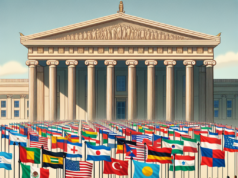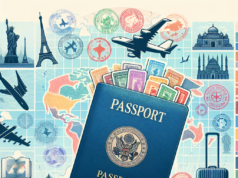
In recent years, the conversation surrounding immigrant rights has intensified, revealing a complex web of challenges and opportunities. As communities across the globe grapple with the implications of migration, the urgent fight for immigrant rights has emerged as a critical issue. This article delves into the current landscape of immigrant rights, exploring historical contexts, key challenges, grassroots movements, legislative efforts, and potential strategies for the future.
Understanding the Current Landscape of Immigrant Rights in Today’s Society
The current landscape of immigrant rights is marked by a growing awareness of the struggles faced by immigrants, particularly in the wake of global crises such as the COVID-19 pandemic and geopolitical conflicts. In many countries, immigrants are often viewed through a lens of suspicion, leading to increased scrutiny and restrictive policies. However, there is also a burgeoning recognition of the contributions immigrants make to society, from economic growth to cultural enrichment. Advocacy groups and community organizations are working tirelessly to highlight these contributions while pushing for comprehensive reforms that ensure equitable treatment and protection for all immigrants, regardless of their status.
Historical Context: The Evolution of Immigration Policies and Their Impact
To understand the current state of immigrant rights, it is essential to examine the historical evolution of immigration policies. Over the decades, immigration laws have oscillated between inclusivity and exclusion, often reflecting the prevailing political climate. The mid-20th century saw significant reforms aimed at family reunification and refugee protection, yet the late 20th and early 21st centuries have been characterized by increasingly stringent measures, including the militarization of borders and the criminalization of undocumented immigrants. These policies have not only shaped the experiences of millions but have also fostered a culture of fear and uncertainty, impacting families and communities across the globe.
Key Challenges Facing Immigrants: Legal, Social, and Economic Barriers
Immigrants today face a myriad of challenges that hinder their ability to thrive. Legally, many are trapped in a convoluted immigration system that is often inaccessible and fraught with delays. Socially, immigrants frequently encounter discrimination and xenophobia, which can lead to isolation and mental health struggles. Economically, barriers such as limited access to jobs, education, and healthcare exacerbate their vulnerabilities. These challenges are compounded for undocumented immigrants, who live in constant fear of deportation and lack basic rights and protections. Addressing these multifaceted barriers is crucial for fostering a more inclusive society.
Grassroots Movements: Mobilizing Communities for Immigrant Advocacy
Grassroots movements have emerged as powerful forces in the fight for immigrant rights, mobilizing communities to advocate for change at local, national, and international levels. Organizations such as the United We Dream and the National Immigration Law Center have played pivotal roles in raising awareness and providing resources for immigrants. These movements often center the voices of those directly affected, ensuring that their experiences inform advocacy efforts. Through protests, educational campaigns, and community organizing, grassroots activists are challenging the status quo and demanding policies that prioritize human rights and dignity for all immigrants.
Legislative Efforts: Analyzing Recent Bills and Their Implications for Immigrants
In recent years, several legislative efforts have aimed to address the pressing issues facing immigrants. Bills such as the Dream Act and the U.S. Citizenship Act have garnered significant attention, proposing pathways to citizenship for undocumented immigrants and protections for DACA recipients. However, the political landscape remains contentious, with partisan divides often stalling progress. Analyzing these legislative efforts reveals both the potential for meaningful reform and the obstacles that persist, highlighting the need for sustained advocacy and public support to push these initiatives forward.
The Path Forward: Strategies for Strengthening Immigrant Rights and Protections
Looking ahead, a multifaceted approach is essential for strengthening immigrant rights and protections. This includes advocating for comprehensive immigration reform that addresses the root causes of migration, such as economic disparity and violence. Additionally, fostering coalitions between immigrant rights organizations and other social justice movements can amplify voices and create a united front against discrimination. Education and awareness campaigns are also vital in shifting public perception and dismantling stereotypes. Ultimately, a commitment to human rights and dignity for all individuals, regardless of their immigration status, must guide the path forward.
The fight for immigrant rights is not merely a legal or political issue; it is a moral imperative that speaks to the values of justice, equity, and humanity. As communities continue to mobilize and advocate for change, it is crucial to recognize the interconnectedness of immigrant rights with broader social justice movements. By understanding the challenges, leveraging grassroots efforts, and pushing for legislative reforms, society can work towards a future where all individuals are treated with the respect and dignity they deserve, regardless of their immigration status.



























